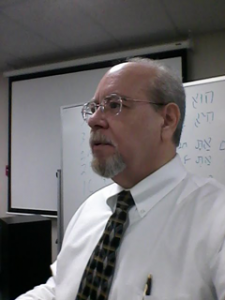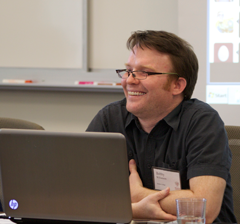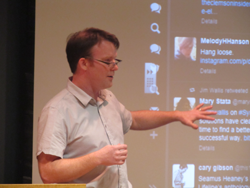12 Surprises When Lecturing Less
12 Surprises When Lecturing Less (and Teaching More)
Posts from 2013
Authors share and reflect on their creative use of classroom time. What happens when professors replace powerpoint slides with other teaching tools such as crayons, film, debate, Google, and Twitter? What do you do if class discussion goes TOO well?
Bloggers:
- Eugene V. Gallagher (Connecticut College, emeritus)
- Karen Wiseman (Lutheran Theological Seminar in Philadelphia)
- Deepak Sarma (Case Western Reserve University)
- Monica Coleman (Claremont School of Theology)
- Lynn Neal (Wake Forest University)
- Kate Blanchard (Alma College)
- Grace Ji-Sun Kim (Moravian Theological Seminary)
- Wil Gafney (Brite Divinity School)
- Greg Carey (Lancaster Theological Seminary)
- Kwok Pui-lan (Episcopal Divinity School)
- G. Brooke Lester (Garrett-Evangelical Theological Seminary)
- Eric Barreto (Princeton Seminary)
- Robert Williamson (Hendrix College)
- Lea Schweitz (Lutheran School of Theology, Chicago)
- Israel Galindo (Columbia Theological Seminary)
Sign-up to receive email alerts when new blogs are posted
Follow us on Twitter and Facebook to receive announcements of new postings.
Sign up for our eNewsletter to receive timely announcements of Wabash Center programs.
Posts:
Select an item by clicking its checkbox
Like many others, I started my teaching career emulating those who taught me, and, uncritically imitating the way they taught. By and large, that meant passing on information by lecturing in the classroom, with occasional attempts at "discussion." Since then I've come to understand better the processes of teaching and ...
As a teacher, whenever I utter the words, “Okay class, please get into your small working groups,” I remember the sense of dread that I felt when I heard those words as a student. This semester I’m running an experiment in my Systematic Theology class. It’s the first ...
The previous post identified three possibilities for using Twitter in class. It is only fair that I also explore three pitfalls for using Twitter to lecture less while teaching more 1. Twitter does not allow for nuance. The main concern I hear about Twitter—from both professors and students—is that ...
For several years now, I have experimented with using social media to improve student learning. I began with an exercise using Twitter to teach reader-oriented biblical interpretation (see my recent article in Teaching Theology & Religion). As the Gospel of Mark was read aloud in class, I asked students to ...
The Apostle Paul lived in a world full of visual media. From inscriptions to monuments, the ancient world was a bonanza of sights. Our students today also live in a world dominated by visual media. From websites to television, our digital screens are powerful vistas into an ever-changing world. And ...




